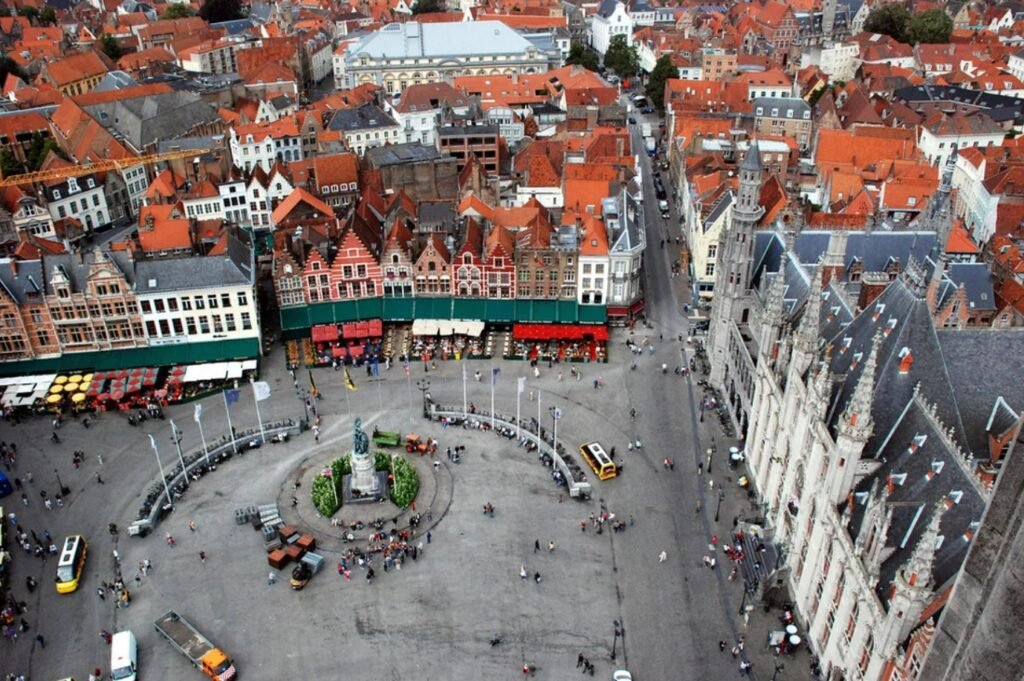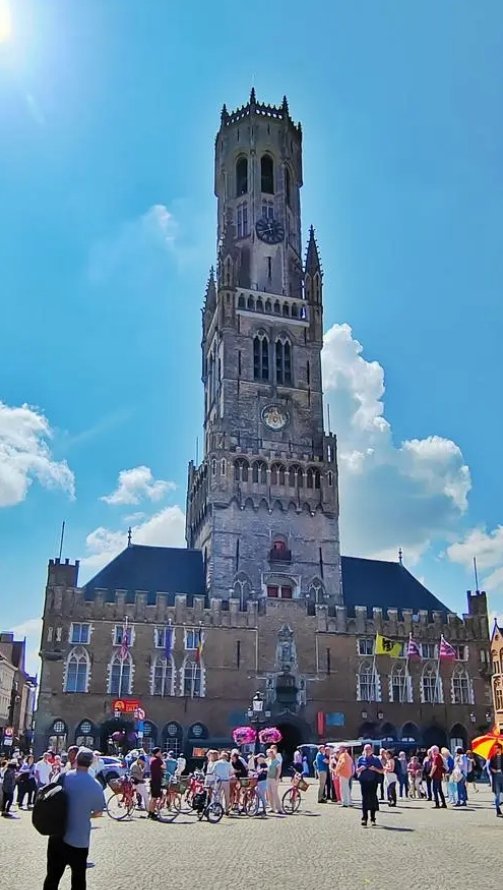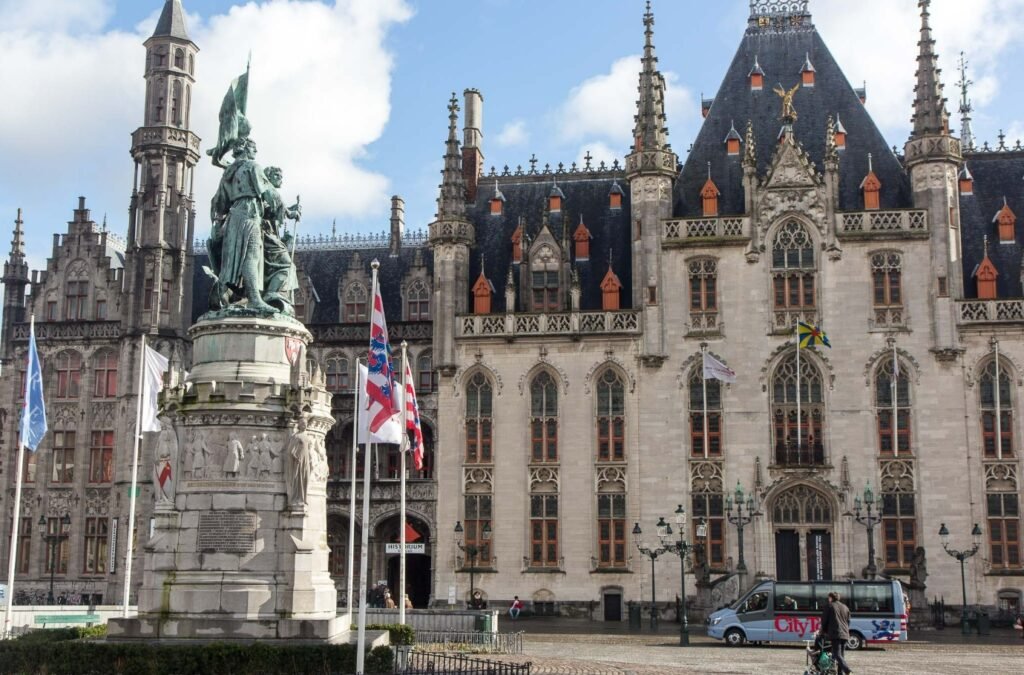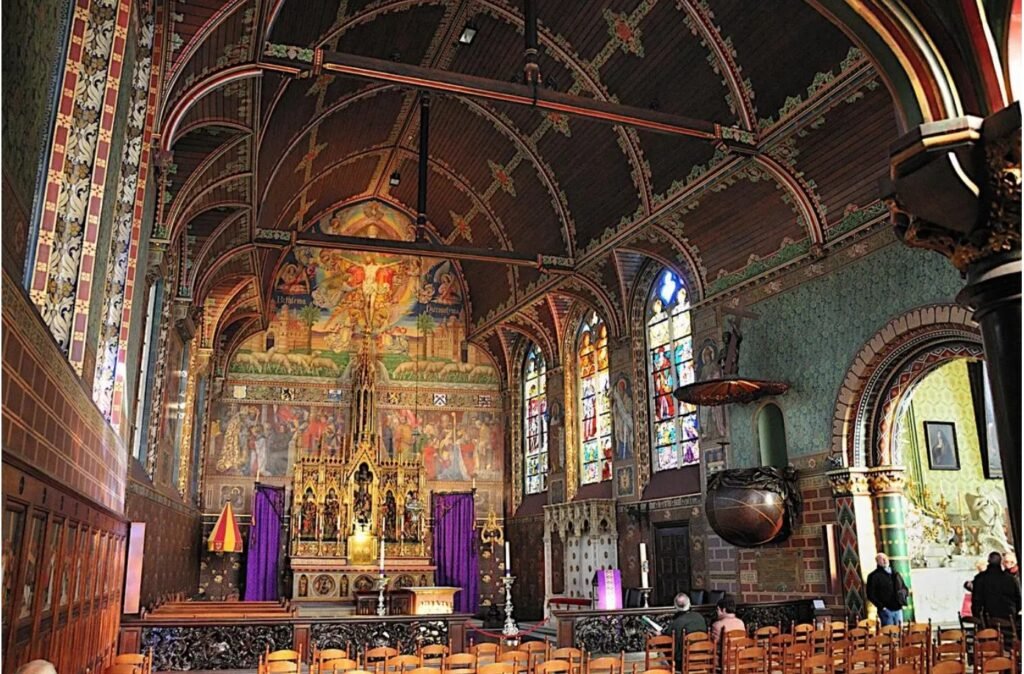Overview of Bruges
Bruges is an ancient city in Belgium, located in the northwest part of the country and serving as the capital of West Flanders. The name “Bruges” comes from the Flemish word for “bridge,” referring to an ancient Roman bridge that spans the Reie River flowing through the city. In the 14th century, Bruges was one of the largest trading ports in Europe. The picturesque old town is filled with charming buildings, while its canals weave through the city, creating a dense network that evokes a strong medieval atmosphere, making visitors feel as if they’ve stepped into an ancient, mysterious world.
Personal Impression
Visiting the famous Bruges feels like stepping back in time. The medieval architecture gives the city a tranquil and serene ambiance. With its canal system resembling a web, the waterways crisscross throughout the town, leading to canals that connect to the ports along the North Sea coast. The traditional brick houses of Flanders line the canals, showcasing a variety of gabled façades that create a lively skyline, beautifully reflected in the water. Often referred to as the “Venice of Belgium,” this medieval city lacks the opulence of Venice but instead offers a sense of simplicity, peace, and comfort.

Market Square (Markt)
Market Square is considered the heart of Bruges, covering an area of about one hectare. Surrounding the square are historical buildings, including the 12th-century Belfry on the south side and the provincial government building, along with a variety of restaurants, cafes, and specialty shops. In the center of the square stands a statue honoring the heroes Jan Breydel and Pieter de Coninck, who are celebrated figures in Bruges’ history.

Belfry
The Belfry is located in the heart of Bruges on Market Square and is a medieval bell tower built between the 13th and 15th centuries. It stands as one of Bruges’ most prominent landmarks. Originally, the Belfry housed treasures and municipal archives, and it was also used to monitor fires and other dangers. To reach the top of the 83-meter tower, visitors must climb 366 narrow, steep steps. While it can be a bit of a workout, the panoramic views of Bruges from the top are truly spectacular.


Castle Square
Castle Square is a historic plaza located in the old town of Bruges, covering about 1 hectare. It is one of the oldest cores of the city. Surrounding the square are several historical buildings, including the City Hall, the Basilica of the Holy Blood, and the former civil registry office.

City Hall
Bruges City Hall is one of the oldest town halls in the Low Countries, established in 1376 and situated on Castle Square, adjacent to the Basilica of the Holy Blood. The architecture of the City Hall is in the late Gothic style, and the interior features an impressive wooden vaulted ceiling and historical murals. The history room houses numerous archives and paintings related to the history of Bruges.

Basilica of the Holy Blood
The Basilica of the Holy Blood is located on Castle Square in Bruges and belongs to the Roman Catholic Church. It was originally constructed in the 12th century and is named for housing a relic of the Holy Blood, which was brought back from Constantinople during the Crusades. The church consists of two chapels: the lower chapel retains its original Romanesque style, while the upper chapel, which houses the Holy Blood relic, was rebuilt in the Gothic style in the 16th century.
Every year from late April to mid-May, during the Feast of the Ascension, religious figures from all over Europe gather in Bruges to venerate the Holy Blood of the Savior. This event has become a major religious celebration in Belgium, and since the arrival of this relic, the city of Bruges has flourished.

Basilica of the Holy Blood
The magnificent Basilica of the Holy Blood was founded in the 13th century. Its bell tower rises to 122 meters, making it the tallest building in the city and the second highest brick tower in the world. The church houses a famous sculpture by Michelangelo: the Madonna and Child. This small marble sculpture is one of the few artworks by Michelangelo that remains outside of Italy.

Groeningemuseum
The Groeningemuseum displays oil paintings from Flanders and Belgium spanning six centuries. It particularly highlights works from the Neoclassical and Realist periods of the 18th and 19th centuries, along with milestone pieces of Belgian Symbolism and Modernism.
Accommodation Guide:
Bruges isn’t a large city, so most visitors typically stay for just one to two nights. It’s recommended to find accommodations near the city center, as it makes walking to the old town and attractions quite convenient. Besides the youth hostels popular among backpackers, Bruges also offers unique guesthouses and boutique hotels that can provide a wonderful experience.
St Christopher’s Inn – Bauhaus Hostel is located in the heart of Bruges’ old town, making it easy to explore the city’s attractions. The hostel offers spacious, clean rooms and is well-equipped with facilities, including a bar where you can also rent bikes to tour Bruges.
Food Guide:
Bruges mainly offers Belgian cuisine, with seafood like fish and mussels being specialties. However, as a popular tourist destination, restaurant prices in Bruges can be on the higher side, especially near attractions like the Market Square and Burg Square. It’s a good idea to avoid dining in heavily touristy areas.
De Koetse is a charming restaurant known for its friendly atmosphere and delicious dishes that attract many guests. Their signature offerings include fresh mussels, fish, and lobster. If you’re feeling indecisive while ordering, you can’t go wrong with the restaurant’s recommended set menu.
Den Dyver
Beer enthusiasts will love this charming restaurant, where every dish is prepared with beer, and the beer served alongside is of the same variety. This place truly showcases the exquisite flavors of beer in every bite.


